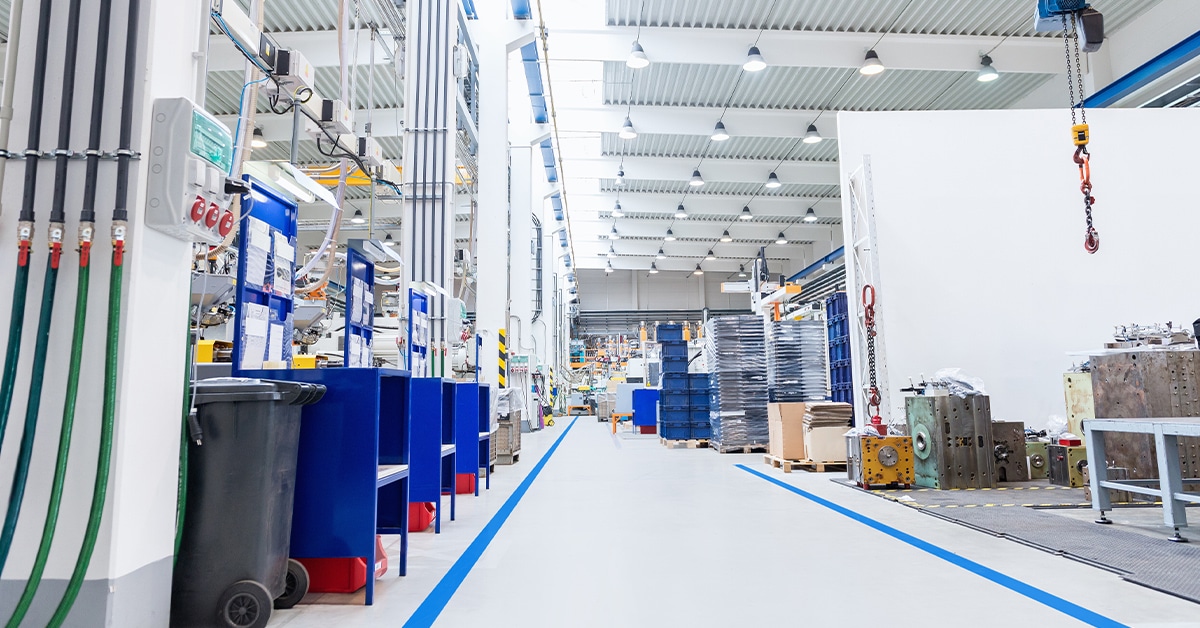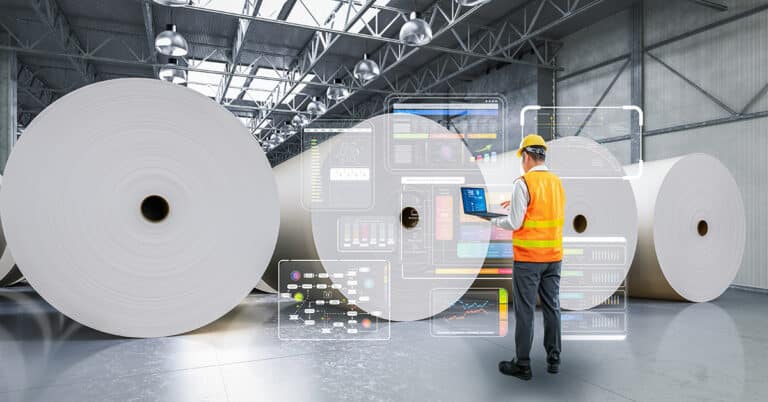Facilities management is rarely considered a source of competitive advantage, but manufacturers adopting an integrated facilities management strategy benefit from lower costs and higher operational efficiencies.
For readers seeking ways to improve performance in areas from machine maintenance to landscaping and security, this blog provides an overview of integrated facilities management. After explaining the term, it discusses the biggest benefits, the technology solutions available and implications for asset management.
What is industrial integrated facilities management?
In a manufacturing organization, Facilities Management (FM) encompasses the services dedicated to maintaining the equipment, infrastructure and services the business needs for safe and efficient production. While maintenance comprises a substantial portion, this extends to:
- Maintenance of buildings and services: HVAC, lighting, floors, windows
- Footprint: Ensuring there’s enough space and that it is utilized optimally
- Parking and landscaping
- Employee amenities: Break rooms and similar facilities
- Security
- Energy management
- Waste management: Recycling, water treatment facilities, chemical storage
Conventionally, each of these activities is managed separately. Each has its own management, dedicated office, storage space and its own administrative systems. This typically includes purchasing, where each team uses their own preferred vendors.
Integrated facility management (IFM) refers to bringing these activities together in a single organization. Rather than residing in separate silos, resources are shared and deployed as needed to serve the goals of the organization.
This holistic approach breaks down barriers and ensures better alignment with organizational objectives. It eliminates duplication of effort and avoids situations where unclear responsibilities lead either to work not being done or being done twice. This results in increased operational efficiency and greater sustainability.
The importance of IFM in industrial settings
Manufacturing operations are challenging to support and maintain. Complex, often energy-intensive, processes and sophisticated machinery bring hazards to manage and regulations to satisfy. High levels of machine availability are key to achieving output goals, but financial controls require careful allocation of finite resources.
Collectively, these points, along with the other aspects of maintaining a large and complex site, raise the importance of facility management to where it gets close attention from senior leaders.
IFM sharpens the focus on organizational goals and eliminates ambiguity over responsibilities. This increases flexibility and shortens response times while maintaining compliance with external regulations and helping reduce costs.
The holistic view of manufacturing operations that IFM provides means critical machinery receives the maintenance it needs without adversely impacting availability. At the same time, maintenance backlogs are managed regarding future needs and the goal of maximizing asset longevity, while safety, environmental compliance and sustainability objectives are neither overlooked nor downplayed.
Key benefits of integrated facilities management
The primary benefit from IFM, and the biggest reason for implementing it, is to enhance the organization’s ability to satisfy customer requirements. More specifically, IFM:
- Contributes to creating a safe working environment
- Provides operations with the capacity needed to satisfy demand
- Reduces costs
- Improves fulfillment of sustainability objectives
Here’s a closer look at each.
Safety
By eliminating silos, IFM improves communication and speed of response. As potential hazards are identified, the facility manager can allocate resources quickly with no ambiguities over who is responsible for taking action.
Capacity
Effective machinery maintenance is essential for high levels of OEE. This dictates a strong emphasis on planned, and increasingly predictive, maintenance to avoid breakdowns and minimize planned downtime.
(Safety is also a capacity issue, as accidents can leave equipment stopped for extended periods while investigations are conducted and remedial actions identified and implemented.)
Cost reduction
When multiple independent teams or departments perform various aspects of facilities management, duplication and excess costs are inevitable. All too often, departments will have separate and incompatible systems for requesting, planning and logging work. They will have separate vendors, office space, storage space and duplicate equipment.
IFM provides facility managers with better visibility into the diverse set of activities carried out. This lets them increase resource utilization while simultaneously improving service levels and negotiating better deals with external vendors and service providers.
Sustainability
In a business without IFM, responsibility for activities like energy and water conservation, waste treatment and recycling, is split between multiple teams. This misses the advantages realized by taking a holistic approach. For example, an integrated facilities maintenance function can better optimize furnace and boiler servicing for energy and other cost savings.
Technology & facilities management solutions
One of the issues, and opportunities, with moving to IFM is consolidating or streamlining the various systems used to manage activities. Two approaches to explore are:
1. Step up to a higher level of technology
2. Partner with a facility management services provider
Technology
One of the benefits of a CMMS is its ability to receive and handle large numbers of work requests. Some industrial businesses will find their current CMMS is capable of taking on the work of other functions in addition to machine maintenance. Others will need to upgrade or implement a more sophisticated software solution.
Before looking at products, start with a thorough evaluation of existing needs and activities. This will drive a requirements specification, against which to compare software products.
A second aspect of technology is to consider the benefits of implementing Industrial Internet of Things (IIoT) sensors and advanced data analytics tools. By capturing more data on equipment condition it becomes possible to optimize maintenance to reduce disruptions, lower costs and extend asset life. In addition, advanced analytics, (potentially AI-powered), will support moves towards predictive maintenance.
External service provider
An issue for many industrial businesses is that while many facility management activities are non-core, they are also essential. This creates the risk of distracting facility managers from production-related issues to deal with these other activities.
A solution some manufacturers are adopting is to partner with an integrated facility management services provider. This has the advantage of placing facility service responsibility in the hands of specialists experienced in implementing and using integrated facility management services, which speeds implementation while raising service levels.
When evaluating potential providers of industrial integrated facility management systems, a key point to explore is their familiarity with your industry and processes. This is especially important when moving to integrated facilities maintenance.
Asset management in facilities management
Manufacturers handle asset management in various ways. Some, focused on financial record-keeping, consider it an accounting responsibility, while others place it within maintenance.
Those in the latter category (a growing number), may use their CMMS for asset tracking, preventive and predictive maintenance, and even lifecycle management, but many prefer a separate Enterprise Asset Management (EAM) solution. This, however, can still be handled by the facility maintenance department.
Making asset management part of the integrated facility service has several advantages. It:
- Supports the holistic view of asset care
- Simplifies performance of safety and certification requirements
- Allows easier assessment of condition and repair/replace decisions
- Speeds decision making by keeping all the relevant information within a single business function
Explore the benefits of outsourcing a facility operation like maintenance
The move towards greater integration of facility operations appears certain to continue, aided by new technologies like the IIoT and AI. For manufacturers eager to strengthen their competitive position, integrated facilities management provides a way of accessing operational efficiency improvements and cost savings not otherwise attainable. It also provides a path to increased sustainability through greater visibility into resource consumption and disposal.






